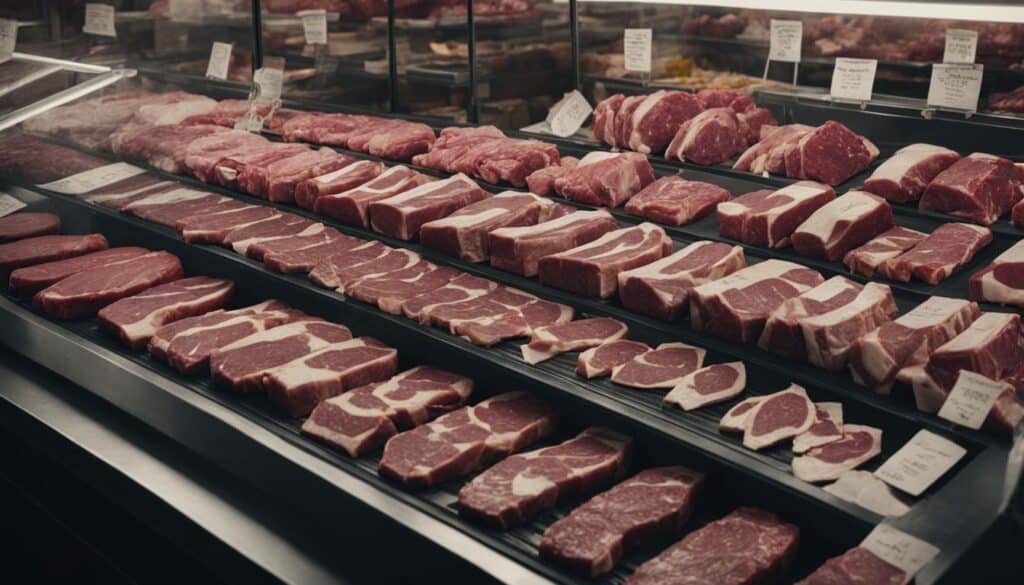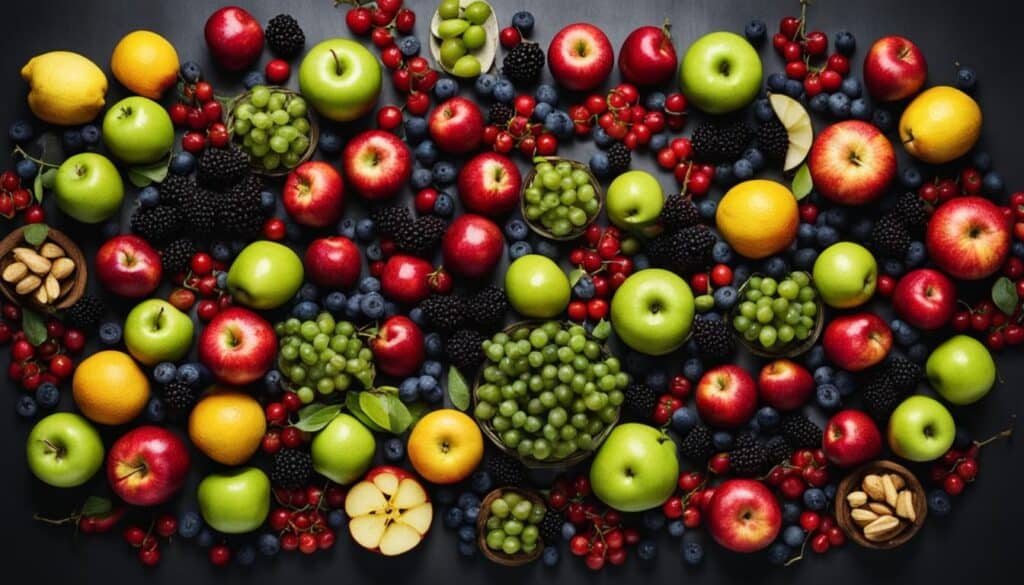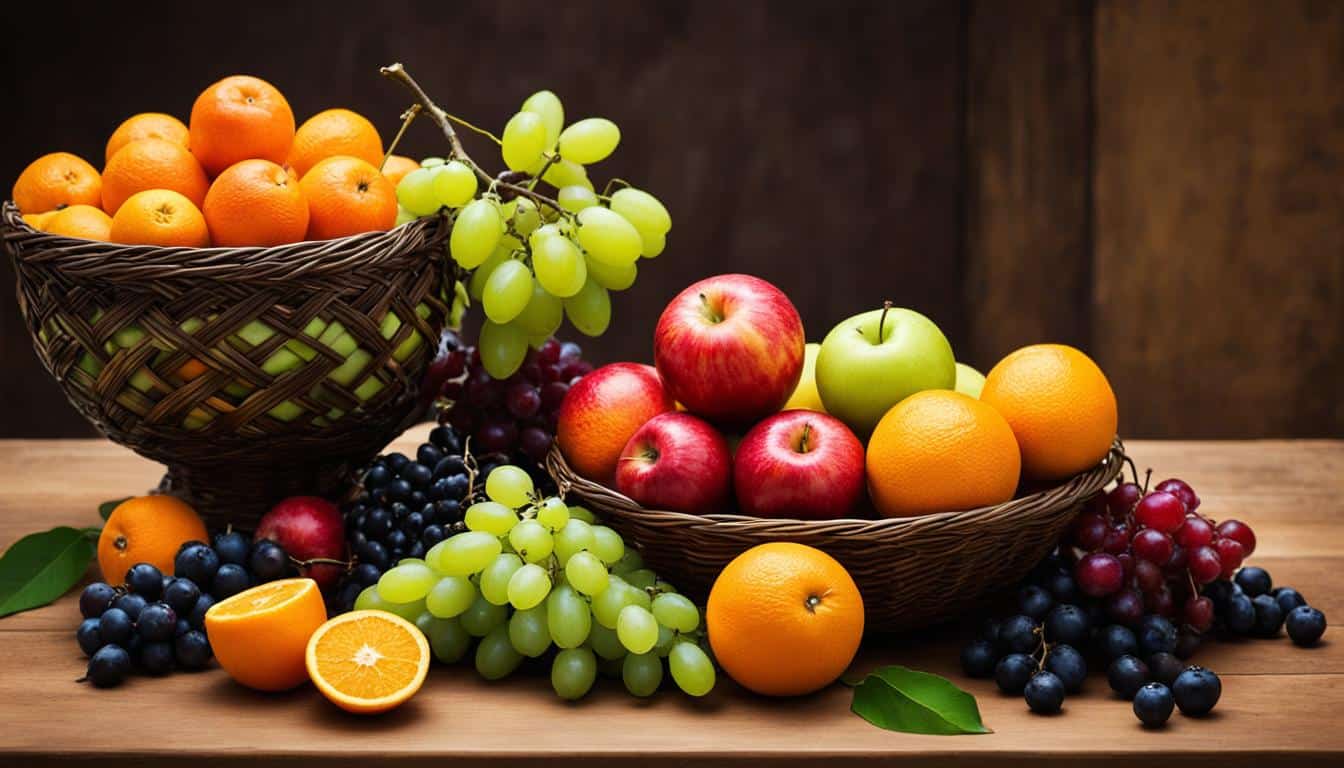Have you ever wondered whether fruit is countable or uncountable? It’s a common question that many English learners have. The truth is, the word “fruit” can be both countable and uncountable, depending on the context. Let’s explore this topic further!
When we talk about “fruit” as an uncountable noun, we are referring to food from plants that usually have seeds inside or come from seeds. For example, you might say, “I love fruit,” meaning you enjoy various types of fruits, such as apples, oranges, and berries.
On the other hand, “fruit” can also be used as a countable noun when we are referring to specific types or varieties of fruit. For instance, you could say, “My three favorite fruits are bananas, melons, and strawberries,” indicating your preference for these particular types of fruit.
Understanding the distinction between countable and uncountable fruit is crucial for using the correct grammar in English. It allows us to express ourselves accurately and effectively. So, next time you’re talking about fruit, consider whether you are discussing it as a general concept or referring to specific kinds!
Key Takeaways:
- “Fruit” can be both countable and uncountable in English.
- As an uncountable noun, “fruit” refers to food from plants.
- As a countable noun, “fruit” refers to specific types or varieties.
- Understanding the distinction is important for proper grammar usage.
- Consider the context when using “fruit” in your sentences.
Countable and Uncountable Nouns in English Grammar
In English grammar, some nouns can be used both as countable and uncountable depending on the context. “Fruit” is one such noun. While it is primarily treated as an uncountable noun, it can also be used as a countable noun when referring to specific types or varieties of fruit.
For example, when we say “I bought some fruit from the grocery store,” fruit is used as an uncountable noun. Here, it refers to the general concept of fruit, without specifying any particular kind. On the other hand, when we say “I ate three apples,” fruit is used as a countable noun, indicating a specific type of fruit (apples) and indicating the exact quantity (three).
The distinction between countable and uncountable nouns is important for understanding how nouns are used in English. Countable nouns refer to individual items that can be counted, while uncountable nouns refer to substances or concepts that cannot be divided into separate units.
“I bought a watermelon from the market.” (Countable noun)
“I enjoy eating watermelon.” (Uncountable noun)
When using countable nouns, we can use numbers, articles (a, an), and quantifiers (some, many) before the noun. However, with uncountable nouns, we use words like some, a lot of, much, a little, a bit of, and no to denote quantity.
The distinction between countable and uncountable nouns in fruit:
| Countable Nouns | Uncountable Nouns |
|---|---|
| Apples | Fruit |
| Bananas | |
| Oranges | |
| Strawberries | |
| Grapes |
As seen in the table above, some fruits have specific countable forms, while others are primarily used as uncountable nouns. This demonstrates the flexibility of the English language in terms of noun countability.
Understanding the countability of nouns, including fruit, is crucial for effective communication and proper grammar usage in the English language.
The Meaning of “Fruit”
The word “fruit” can have different meanings depending on how it is used. As an uncountable noun, it refers to food from plants that usually have seeds inside or come from seeds. For example, “Do you like fruit?” In its countable form, “fruit” refers to a specific type of fruit. For instance, “Many fruits grow in warm climates.”
Understanding the meaning and usage of “fruit” as both an uncountable and countable noun is important for clear and effective communication.
| Meaning | Examples |
|---|---|
| Uncountable Noun | “Do you like fruit?” |
| Countable Noun | “Many fruits grow in warm climates.” |
Quick Tip:
When using “fruit” as an uncountable noun, remember that it refers to the general concept of food from plants. On the other hand, when using it as a countable noun, it refers to specific types or varieties of fruit.
Examples of Countable and Uncountable Fruit
Let’s explore some examples that demonstrate the different uses of “fruit” as both a countable and uncountable noun.
- “I love fruit.”
This sentence uses “fruit” as an uncountable noun, referring to the general concept of fruit. It emphasizes the speaker’s general affection for all types of fruit.
- “My three favorite fruits are bananas, melons, and strawberries.”
In this example, “fruit” functions as a countable noun. It refers to specific types of fruit, namely bananas, melons, and strawberries. The use of the plural form “fruits” indicates that the speaker has three distinct favorites.
These examples highlight the distinction between the uncountable and countable forms of “fruit.” While “fruit” is primarily used as an uncountable noun, it can be employed as a countable noun when referring to specific varieties or types of fruit.
Other Nouns That Can Be Countable and Uncountable
While “fruit” is a noun that can be used both as countable and uncountable, there are several other nouns in the English language that exhibit the same flexibility. Some examples include “meat,” “chicken,” “drink,” and “glass.” These nouns can change their form between countable and uncountable depending on the context. Understanding this distinction is crucial for effectively using these nouns in English.
For instance, “meat” can be used as an uncountable noun when referring to food derived from animals such as cows, pigs, or chickens. An example would be “She doesn’t eat meat.” On the other hand, “meat” can also be used as a countable noun when referring to specific types or varieties of meat. For example, “Some meats are healthier than others.”
“Chicken” is another noun that can take on both countable and uncountable forms. As an uncountable noun, “chicken” refers to the meat derived from a chicken. For instance, “Let’s get chicken for dinner!” uses “chicken” as an uncountable noun. In contrast, “chicken” can also be used as a countable noun when referring to the bird itself. For example, “Our family has three chickens.”
The noun “drink” can also be both countable and uncountable. As an uncountable noun, “drink” refers to a general category of beverages such as water, juices, or sodas. An example would be “We drink a lot of coffee.” However, “drink” can be used as a countable noun to refer to a specific serving or portion of a beverage. For instance, “Two beers, please” or “Let’s get some juice.”
Similarly, “glass” can also function as both a countable and uncountable noun. As an uncountable noun, “glass” refers to the material used for windows or containers. For example, “The window is made of glass.” On the other hand, “glass” can be used as a countable noun when referring to objects used for drinking liquids. For instance, “Bring two glasses from the kitchen.”
Understanding how these nouns can change between countable and uncountable forms is essential for mastering English grammar and communicating accurately. Let’s now take a look at a table that summarizes the countable and uncountable uses of these nouns:
| Noun | Uncountable Use | Countable Use |
|---|---|---|
| Meat | She doesn’t eat meat. | Some meats are healthier than others. |
| Chicken | Let’s get chicken for dinner! | Our family has three chickens. |
| Drink | We drink a lot of coffee. | Two beers, please. |
| Glass | The window is made of glass. | Bring two glasses from the kitchen. |
As you can see from the table, these nouns exhibit both countable and uncountable forms, highlighting the flexibility of the English language. By familiarizing yourself with the various uses of these nouns, you can enhance your language skills and communicate more effectively.
Countable and Uncountable Uses of Meat
Just like “fruit,” the noun “meat” can also be used both as a countable and uncountable noun. As an uncountable noun, it refers to food from a cow, pig, or chicken. For example, “She doesn’t eat meat.” As a countable noun, it refers to a specific type of meat, as in “Some meats are healthier than others.” This demonstrates how “meat” can change its form depending on the context.

| Countable Meat | Uncountable Meat |
|---|---|
| chicken breast | chicken |
| ribeye steak | beef |
| pork chop | pork |
| lamb chop | lamb |
| ground turkey | turkey |
This table illustrates examples of countable and uncountable uses of meat. The countable forms refer to specific cuts or types of meat, while the uncountable forms represent meat in a general sense. Whether it’s a chicken breast or a serving of beef, understanding the countable and uncountable uses of meat enhances our ability to communicate accurately in English.
Countable and Uncountable Uses of Chicken
The noun “chicken” can be used both as an uncountable noun to refer to meat from a chicken and as a countable noun to refer to the bird itself.
When using “chicken” as an uncountable noun, it signifies the meat obtained from a chicken. For instance, you might say, “Let’s get chicken for dinner!” Here, “chicken” is used as an uncountable noun to describe the meat derived from a chicken.
On the other hand, when using “chickens” as a countable noun, it refers to the birds themselves. For example, you might say, “Our family has three chickens.” In this case, “chickens” is used as a countable noun to indicate the number of birds in the possession of the family.
Examples of Countable and Uncountable Chicken:
| Countable Chicken | Uncountable Chicken |
|---|---|
| I saw five chickens at the farm. | I enjoy eating chicken in my meals. |
| She has a pet chicken named Henrietta. | I prefer to buy chicken from the local butcher. |
| They raise chickens for their eggs. | Chicken is a popular protein source. |
As demonstrated in the examples, the countable form of chicken is used when referring to specific birds or quantities, while the uncountable form is used when discussing the meat itself or using it as a general food item.
Countable and Uncountable Uses of Drinks
The nouns “beer,” “coffee,” “tea,” “water,” and “juice” can be used both as uncountable and countable nouns. As uncountable nouns, they refer to a general type of drink. For example, “We drink a lot of coffee.” As countable nouns, they refer to one serving or portion of the drink. For instance, “Two beers, please” or “Let’s get some juice.”

| Drink | Uncountable Use | Countable Use |
|---|---|---|
| Beer | I enjoy drinking beer. | He ordered two beers at the bar. |
| Coffee | I need a cup of coffee. | Can I have two coffees, please? |
| Tea | I prefer drinking tea. | May I have three teas with different flavors? |
| Water | Stay hydrated and drink enough water. | Please bring me two waters with ice. |
| Juice | I like to have a glass of fresh juice. | We should buy some different juices for the party. |
Countable and Uncountable Uses of Bread, Cheese, and Cake
Nouns like bread, cheese, and cake can be used as both countable and uncountable nouns. As uncountable nouns, they refer to the general food items. For example, “We need to buy bread” or “Let’s get some cake.”
As countable nouns, they refer to specific types or categories within the food group. For instance, “Some cheeses are made with mold” or “Some breads take a long time to make.”

| Countable | Uncountable |
|---|---|
| Two loaves of bread | We need to buy bread. |
| A slice of cheese | We need to buy cheese. |
| Three cupcakes | We need to buy cake. |
Some cheeses are made with mold.
Some breads take a long time to make.
Countable and Uncountable Uses of Food
The noun “food” can be used both as an uncountable noun to refer to everything that people and animals eat and as a countable noun to refer to specific types or categories of food. For example, “I ate too much food” uses “food” as an uncountable noun, emphasizing the overall consumption, while “Fried foods are unhealthy” uses “foods” as a countable noun to refer to specific types of food that are fried.
When we talk about “food” as an uncountable noun, it represents the general concept of sustenance, encompassing all edible items, without quantifying or specifying them. It is used to describe meals, nourishment, and the act of eating in a broader sense. For instance:
I love trying different types of food from around the world.
On the other hand, when “food” is used as a countable noun, it refers to distinct items or categories within the broader concept of food. It enables us to discuss specific varieties, dishes, or groups of edibles. Consider the following examples:
- I enjoy Italian foods like pizza and pasta.
- Foods rich in vitamins and minerals are essential for a healthy diet.
- He ordered three different food items from the menu.
Using “food” as a countable noun allows us to convey a more precise meaning by pinpointing particular types, dishes, or servings. This distinction between countable and uncountable uses of “food” helps us communicate efficiently and clarify our intended message in various contexts.

Countable and Uncountable Uses of Glass
The noun “glass” can be used in both countable and uncountable forms, depending on the context. When referring to the material used for windows, “glass” is used as an uncountable noun. For example, “The window is made of glass.” In this sentence, “glass” is used to describe the material that the window is made of, and it is treated as a mass noun.
On the other hand, when referring to objects used for drinking liquids, “glass” is used as a countable noun. For example, “Bring two glasses from the kitchen.” In this sentence, “glasses” is used to refer to two specific objects designed for drinking liquids.
Examples of Countable and Uncountable Glass
Here are some examples to further illustrate the distinction between countable and uncountable forms of “glass”:
| Usage | Example |
|---|---|
| Uncountable | The window is made of glass. |
| Countable | Bring two glasses from the kitchen. |
In the first example, “glass” is used as an uncountable noun to describe the material of the window. In the second example, “glasses” is used as a countable noun to refer to two specific objects used for drinking. This table highlights the usage of “glass” in both countable and uncountable forms.
Conclusion
In conclusion, understanding the concept of countable and uncountable nouns is crucial for effective communication in English. The word “fruit” serves as an example of a noun that can be both countable and uncountable, depending on the context.
By recognizing the distinction between countable and uncountable forms of nouns, you can accurately express quantities and convey your intended meaning. Whether it’s referring to a specific type of fruit or discussing the general concept of fruit, knowing when to use the countable or uncountable form is essential.
Countable and uncountable nouns are a fundamental aspect of English grammar, and mastering their usage can greatly enhance your language skills. So, take the time to familiarize yourself with the countability of different nouns, and you’ll be able to communicate with confidence and precision.
FAQ
Is fruit countable or uncountable?
The word “fruit” is generally considered an uncountable noun. However, it can occasionally be used as a countable noun when referring to specific types of fruit.
What are countable and uncountable nouns in English grammar?
Countable nouns are nouns that can be counted and have a plural form, while uncountable nouns are nouns that cannot be counted and do not have a plural form.
What does “fruit” mean?
As an uncountable noun, “fruit” refers to food from plants that usually have seeds inside or come from seeds. As a countable noun, it refers to a specific type of fruit.
Can you give examples of countable and uncountable fruit?
Sure! As an uncountable noun: “I love fruit.” As a countable noun: “My three favorite fruits are bananas, melons, and strawberries.”
Are there other nouns that can be countable and uncountable?
Yes, there are several other nouns, such as “meat,” “chicken,” “drink,” and “glass,” that can be used as both countable and uncountable depending on the context.
How can “meat” be used as countable and uncountable?
As an uncountable noun, “meat” refers to food from a cow, pig, or chicken. As a countable noun, it refers to a specific type of meat.
Can “chicken” be used both as countable and uncountable?
Yes, “chicken” can be used as an uncountable noun to refer to meat from a chicken and as a countable noun to refer to the bird itself.
How can drinks be both countable and uncountable?
Nouns like “beer,” “coffee,” “tea,” “water,” and “juice” can be used as both uncountable nouns to refer to a general type of drink and countable nouns to refer to one serving or portion of the drink.
Can bread, cheese, and cake be countable and uncountable?
Yes, these nouns can be used as both countable and uncountable nouns. As uncountable nouns, they refer to the general food items. As countable nouns, they refer to specific types or categories within the food group.
How can “food” be used as countable and uncountable?
The noun “food” can be used as an uncountable noun to refer to everything that people and animals eat and as a countable noun to refer to specific types or categories of food.
Can “glass” be used as countable and uncountable?
Yes, “glass” can be used as an uncountable noun to refer to the material used for windows and as a countable noun to refer to objects used for drinking liquids.
Why is understanding countable and uncountable nouns important?
Understanding the difference and usage of countable and uncountable nouns is important for accurate and effective communication in English.





Leave a Reply